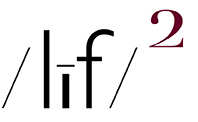cover photo -The World At My Feet ~ all photos (embiggenable)
11 YEARS AGO I MADE POD PHOTO book titled The World At My Feet. In hindsight that title was a bit of a misnomer inasmuch as, while my picture making gaze was cast downward, neither my feet nor the ground / floor were integral to the photographs (with 2 exceptions). Retrospect suggests that a more appropriate title should been something like Looking Down, or, Eye Contact Down, or, Downward Gaze.
In any event, during the 11 years since the making of that photo book, I have made hundreds of downward gazing photographs, to include the 5 in this entry which were made over the last 2 days. And then there is the Eyes Downcast gallery on my work which, FYI, has not been updated for a few years. Update coming soon.
To be certain, I have never considered the photographs resulting from my downward gaze M.O. to be a body of work. However, I do believe that now is the time to round up the best of the bunch and make another photo book.
BONUS CONTENT:
all photos (embiggenable)
A TRIP TO NYC IS IN MY VERY NEAR future for the sole purpose of seeing the North American premiere of Constellation, the most comprehensive presentation–454 prints–of work by Diane Arbus. I must admit that I feel that viewing 454 prints replete with Diane Arbus subject content is an intimidating proposition. It might just require a 2-day viewing experience; day 1–a comprehensive walk-through to get a grasp of the scope and tenor of the collection, and, day 2–spend time engaging with some of the more captivating photographs. In any event, it should very interesting.
FYI, over the years I have made a few–very few–Arbus-like photographs. Strangely enough, most are of children. While my photos do not have the Arbus strange weirdness vibe, they are a bit on the quirky side.

